A Closer Look At Today’s Executive Pay Issues
By Scott A. Coleman, Korn/Ferry International
Contentious debates and numerous regulatory changes have sought to address the perception that some shareholders remain in the dark about executive compensation packages. Yet, these discussions often obscure an equally important executive pay issue: the emergence of new performance-based long-term incentives (LTI) that are part of an overall LTI portfolio.
The stock option backdating controversy and the U.S. Securities and Exchange Commission’s new rules on executive compensation disclosure are only the most recent forces contributing to a profound change in executive compensation design. A 2005 accounting rule change concerning stock options, negative perceptions of stock options following the dot-com bubble and mounting shareholder pressure regarding equity usage are also significant drivers of change in the design of executive compensation plans. All of these factors are causing forward-looking companies to embrace a more sophisticated assortment of LTI vehicles.
Given the heated opinions surrounding executive compensation, forthright and well-balanced assessments of key issues are increasingly useful to compensation design planners, who must keep in mind that:
- The pressures affecting executive compensation design are real and have staying power;
- Designing an effective executive compensation plan that can withstand those pressures requires the balancing of numerous objectives; and
- A new LTI portfolio that includes performance-based LTI vehicles can help executive compensation plan designers achieve the appropriate mix.
A LIGHTNING-ROD ISSUE – WITH LEGS
Executive compensation has long qualified as a “lightning rod” issue. In recent months and years, however, the lightning has struck much more frequently, and it shows no sign of diminishing.
Not long ago, debates about the amounts and makeup of CEO pay flared up during each proxy season and then subsided until the subsequent proxy season rolled around. That calm stretch has vanished. The uproar around stock option backdating marks only the latest in a long string of hot button executive pay issues featured prominently in the business press virtually every day.
While meeting business objectives continues to be the most critical factor in designing executive compensation plans, it has also become important to ensure that the plans hold up under the glare of the executive compensation spotlight. Compensation committee members must understand that their plan could show up on the front page. Whether or not that comes to pass, they should be able to stand behind their plan and feel confident and comfortable that it satisfies all of its objectives.
DRIVERS OF CHANGE
There are a number of factors currently shaping executive compensation design. Those factors – which include shareholder, regulatory, governance and business considerations – can be difficult to balance. The best way to do so is by understanding the dynamics at play within each factor:
Shareholder Pressure
Still smarting from the widespread use of stock options and the growth in executive compensation levels over the past decade, shareholders are pressuring boards and executive teams to reduce the use of shares in equity compensation plans and increase the use of performance-based compensation.
Shareholders have put forth a strong case that companies need to better manage their “run rates” or “burn rates” (terms that refer to the number of shares granted to employees each year). They have also pressured companies to reduce their “overhang,” which refers to the total amount of shares outstanding and reserved for future grants to employees. The message from shareholders is clear: Equity usage skyrocketed in the 1990s. It shouldn’t go any higher.
The influence of shareholder interest groups has grown much stronger in recent years. Many of those groups advise institutions that hold large amounts of a company’s shares how to vote on items put to shareholder votes each year. For example, an institutional shareholder group may recommend that a client votes to approve a stock option plan, but only if the board and the company also agree to lower the current run rate or overhang rate, or promise that they will not re-price the company’s options.
Ultimately, shareholders are demanding compensation plans that are more performance-based. The key challenge lies in selecting performance measures that align with the business strategy, thereby fostering a pay-for-performance relationship that sustains shareholder value creation over the long term.
New Regulatory Demands
Individuals charged with designing executive compensation plans must understand and comply with a rash of new and complex regulations, including the following:
- Internal Revenue Code Section 409A, which is part of the American Jobs Creation Act of 2004, established new rules for the design and tax treatment of deferred compensation.
- Financial Accounting Standard (FAS) 123-R, which took affect in 2005, completely changes how stock options are accounted for (as an expense now).
- New executive compensation and option grant disclosure requirements recently adopted by the SEC affect how executive compensation is reported in proxy statements and annual reports.
Corporate Governance Scrutiny
These regulations, the events that contributed to their creation and other, related incidents have contributed to a much greater focus on corporate governance. Companies need to have strong governance practices and demonstrate the right “tone at the top” to investors, regulators, their own employees and other stakeholders.
Corporate directors are keenly aware that their counterparts at companies stung by governance failures were criticized for being “asleep at the wheel.” Directors and the executives who work closely with them understand that shareholders, regulators and other stakeholders are holding them accountable to the highest level of corporate governance possible.
The new governance ideal emphasizes disclosure and transparency. The new ideal also means that many directors are asking challenging questions of executives and spending more time ensuring that the board’s oversight is as exhaustive as possible.
Scrutiny of governance practices by shareholders and regulators also has greatly increased, and has contributed to changes in executive compensation practices. For example, many corporate boards have voluntarily created stock ownership guidelines for executives to help ensure that executive compensation (and therefore executive decision-making) aligns with shareholder interests.
As recently as five years ago, stock ownership guidelines existed at less than half of large U.S. publicly traded companies. Today, approximately two-thirds of those same companies have implemented stock ownership guidelines.
Balancing Business Objectives
While the nature and intensity of external pressures on executive compensation plan designers have changed, so have the ways in which designers use components within the plan to meet business objectives. Executive compensation plan designers must weigh:
- Shareholder alignment needs;
- Pay-for-performance needs;
- Attraction and retention needs; and
- Evaluations of the actual cost vs. the perceived value of incentive vehicles.
While stock options still pay for performance through stock price appreciation, the extent to which they address other business objectives is less certain. For example, at companies with a flat or decreasing stock price, options may not address attraction and retention objectives because the perceived value of stock options may have diminished. During the 1990s, most executives and managers viewed stock options as gold. But the ensuing recession and uncertain nature of the current market have diminished the value of stock options as an attraction and retention tool for many companies.
Prior to FAS 123-R, stock options were relatively simple to evaluate: there was no need to calculate their cost, assess their perceived value and reconcile those figures. However, while stock options reward executives for a rising stock price, they do not possess a downside risk for executives. The value of the options to the executive is the same (zero) if the share price is “underwater” by a penny or $20 below the exercise price. While options provide an appropriate pay-for-performance relationship in an environment of declining stock, alignment with shareholders can be compromised.
NEW LTI MIXES
According to U.S. public company filings, the use of traditional, time-vested stock options among large companies decreased by roughly 15 percent between 2002 and 2005. To be sure, traditional stock options remain a useful component of an effective LTI portfolio. Stock options continue to be used by most public companies, with more than 80 percent continuing to rely on stock options as a component of their LTI mix. During this same period, the use of time-vested restricted stock awards at large companies increased by slightly more than 15 percent, although their use is showing signs of hitting a plateau.
Among recent changes to LTI strategy, one of the most noteworthy shifts is the surging interest in performance awards, where awards are earned based on the achievement of multi-year performance hurdles. In the past three years the use of these performance awards by large companies has grown by close to 20 percent. This growth represents a larger increase than any other form of long-term incentive. Today, about half of large public companies use performance awards (delivered in shares or cash) in their LTI portfolios.
During the next two to three years we project that figure will soar to 75 percent or more. Performance awards can be blended with other LTI vehicles, such as stock options and restricted stock, to balance various business objectives. The combined value of these awards delivers the desired total LTI opportunity. The mix of value by vehicle varies by company.
A FRAMEWORK FOR THE FUTURE
Each LTI vehicle possesses its own strengths and weaknesses. The most appropriate mix of LTI vehicles varies by company; each company has a unique set of circumstances that requires a tailored executive compensation plan. When it comes to determining the right LTI portfolio, off-the-shelf solutions are usually off the mark.
Scott A. Coleman is a senior client partner in the Atlanta office of Korn/Ferry International, which recently launched an Executive Compensation Practice to advise compensation committees and to work with senior management to make recommendations about pay philosophy, programs and governance issues. Scott can be reached at [email=scott.coleman@kornferry.com]scott.coleman@kornferry.com[/email].

























